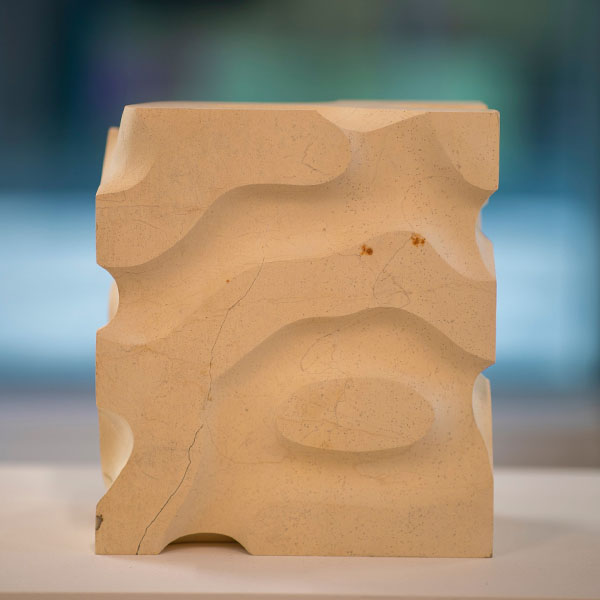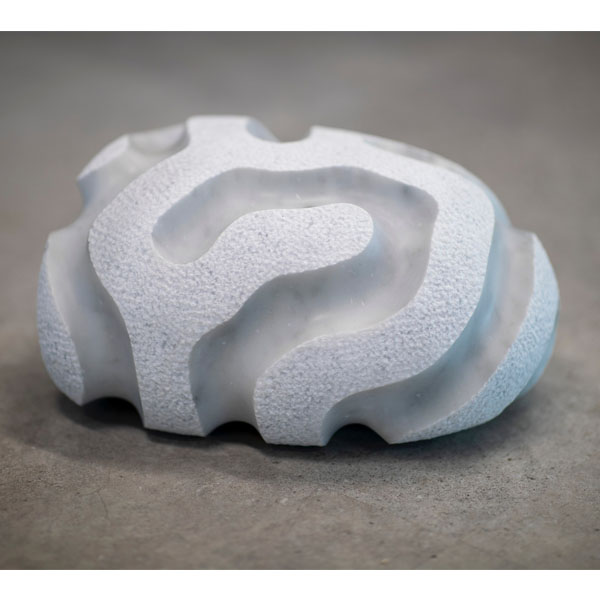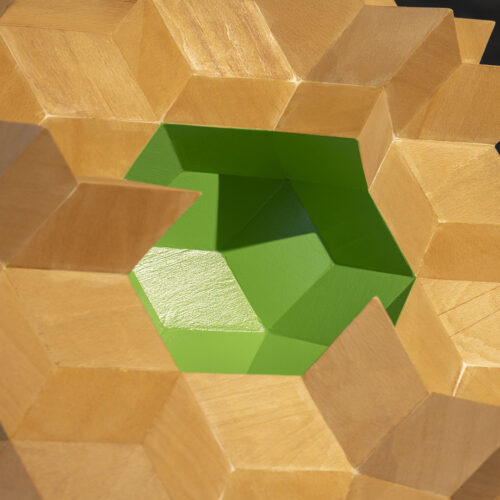About Dominic Hopkinson
Mining the vast pool of ideas within mathematics, physics and molecular biology, Dominic Hopkinson generates sculptures in stone, plaster and bronze, attempting to distil these complex concepts into pure visual form. The sculptures question how our world appears so familiar at different scales and invites the audience to impose their own reading of scale upon the work. His work explores the nature of form and philosophy, playing with ideas of scale, tone and shadow, to talk of a universal mathematical structure that influences and guides our world experience at many levels.

Stone is usually my “go to” material. I think in three dimensions in a reductive way rather than in an additive way. I mean, stone carving is the process of removing material, while something like modelling in clay is mainly additive, if you make a mistake or want to change something you can just stick more clay on. Not so easy to do when stone carving. However not everything is a stone carving, so it’s important to recognise when other techniques are required to realise an idea.
Dominic's work in material matters
Utilising traditional materials and techniques, in the body of work on display in Material Matters I have looked at the impact a particular set of equations have on the generation of order and structure. Swift Hohenberg partial differential equations set the parameters within which any “fluidly” variant process occurs. Ripples in sand and water, animal camouflage patterns, for example. Hand carved using traditional processes, tools and materials, the work is based on contemporary mathematical research and is abstract in every sense. Yet it still seems capable of engaging the interest of the viewer. I believe this engagement is an act of self-recognition which occurs because mathematics is the fundamental basis for the generation of structure in nature, including us.
What creates form? What creates space? Is there a ubiquitous mechanism that underpins all growth processes? The wind forms ripples in sand and water, the dynamics of the atmosphere generates clouds. All animals and plants grow, create structure, occupy space according to rules and processes defined within their DNA. Atoms align into crystals with explicit geometries, the matter in the universe is strangely evenly distributed in space. As a sculptor I attempt to study this creative mechanism as it is relevant to different scales, and generate works that can be read as various forms; corals, animals, landscapes etc depending on the viewer’s interpretation. There are no correct answers!

Dominic Hopkinson in conversation with Material Matters curator Alice Chandler
See more


